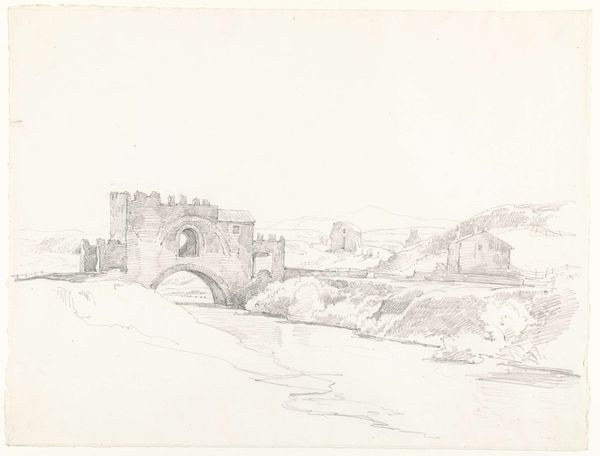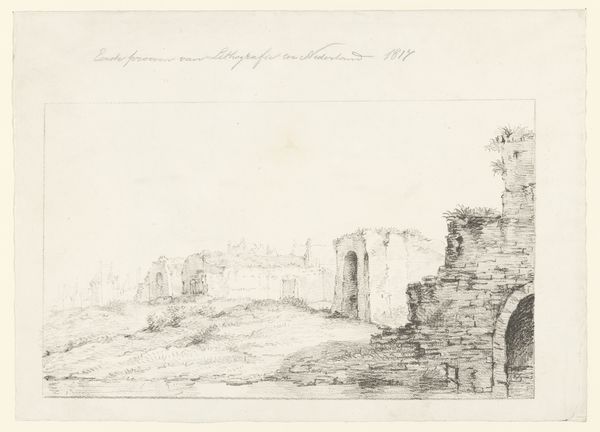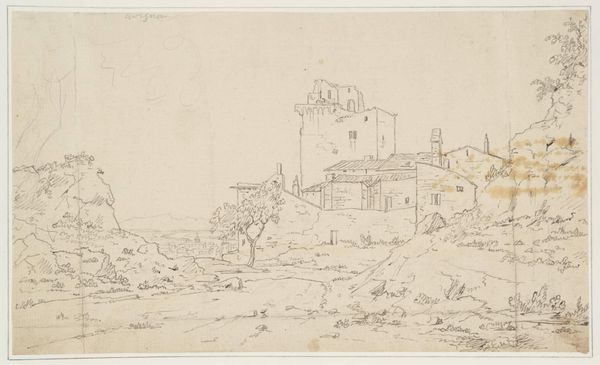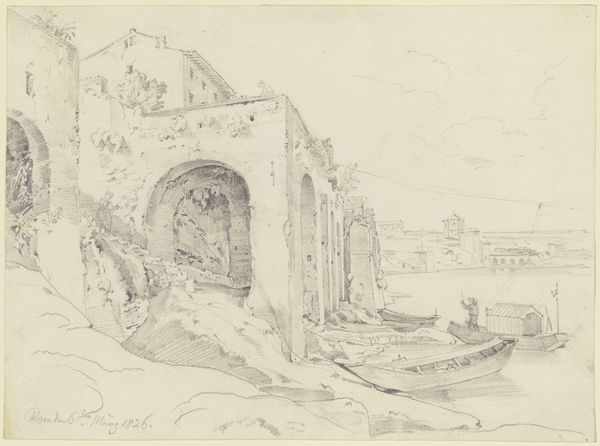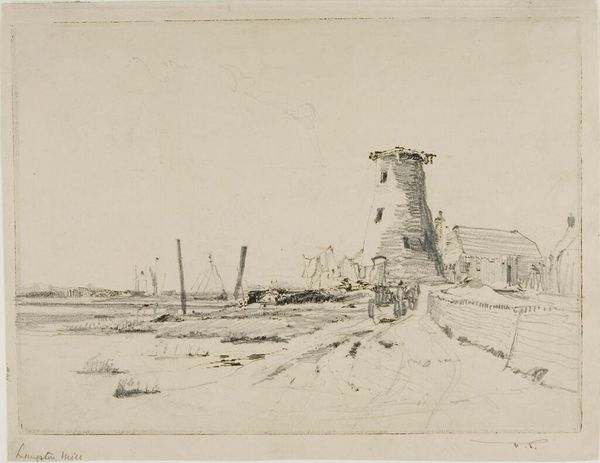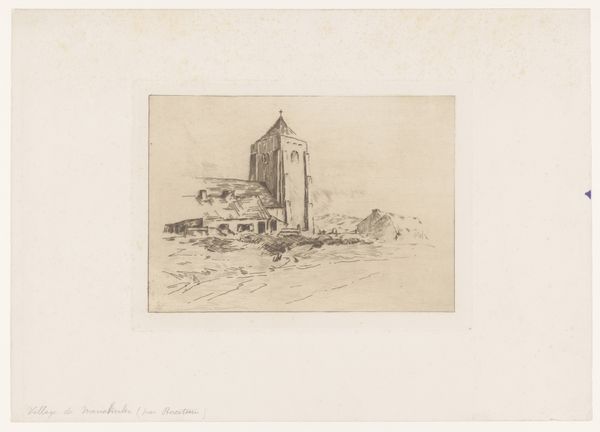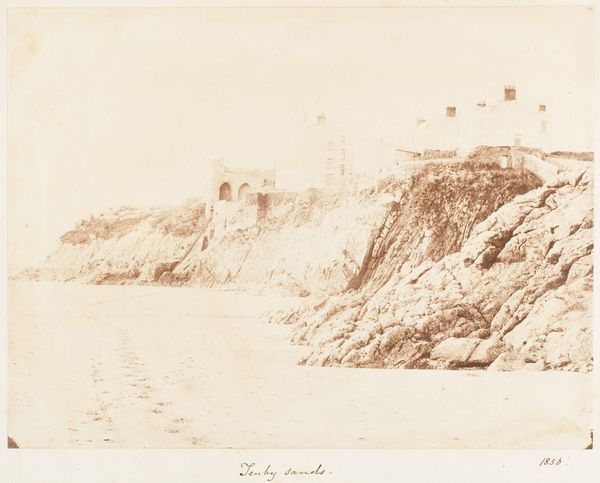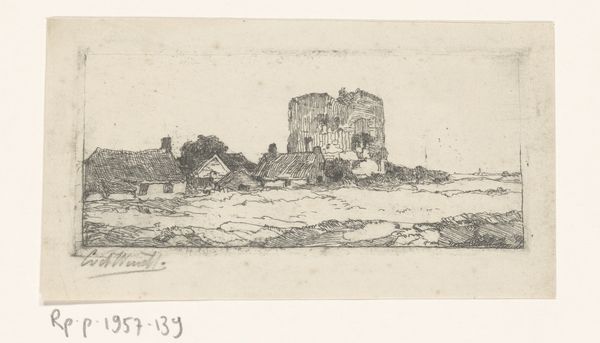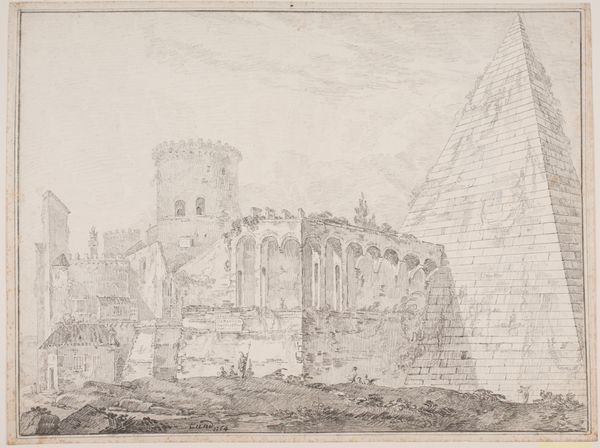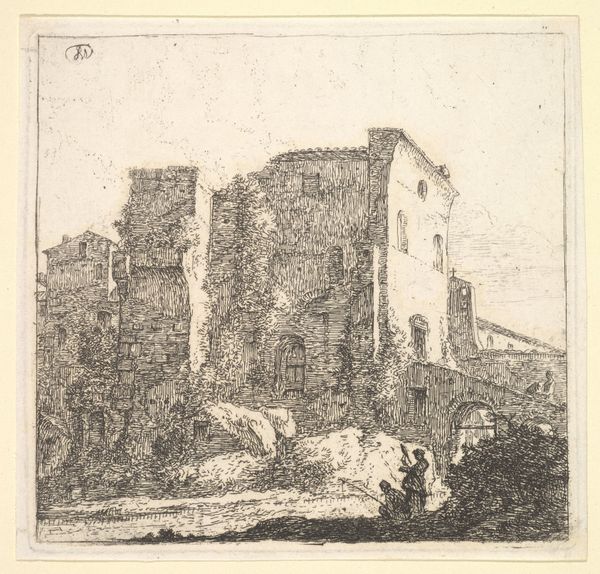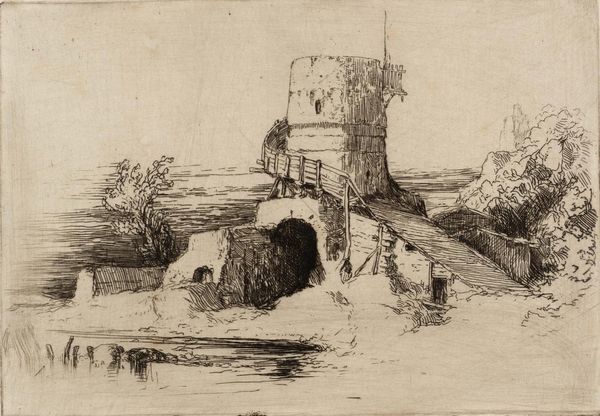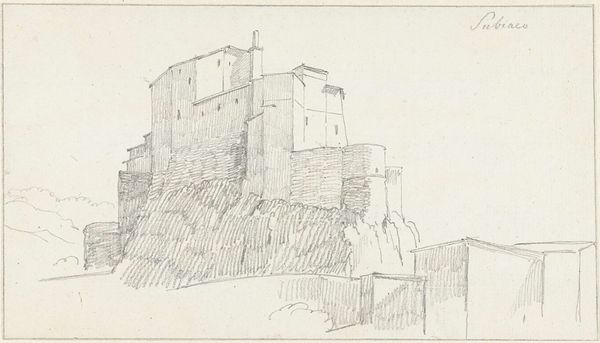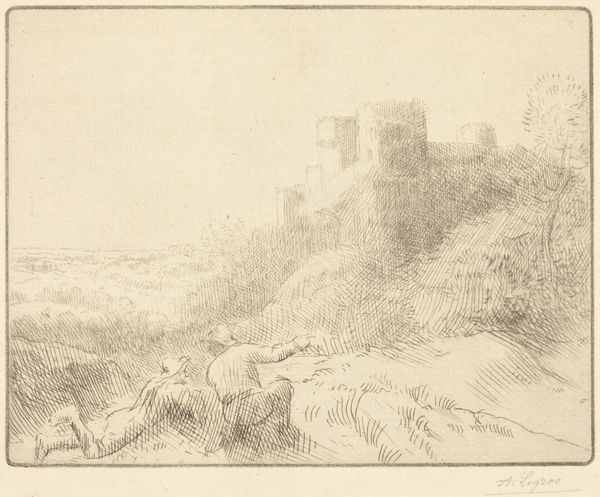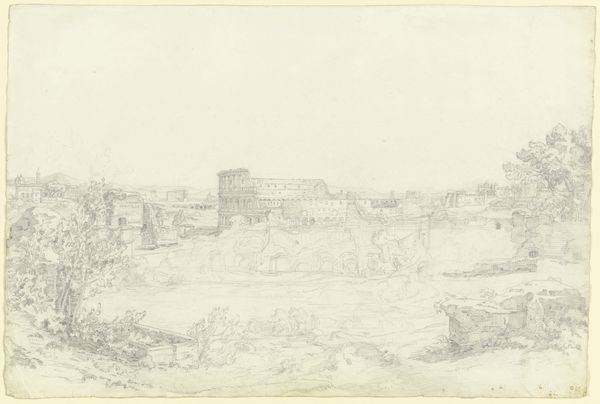
print, etching
# print
#
etching
#
landscape
#
etching
Copyright: National Gallery of Art: CC0 1.0
Curator: Here we have David Young Cameron's etching, "The Boddin," created in 1911. It depicts a sequence of stone structures perched upon a small, undulating landmass. Editor: The scene possesses a certain ethereal quality. The understated color palette focuses my attention on form. How does the artist play with depth and proportion, drawing me in with these intriguing structural silhouettes? Curator: As an etching, its production relied on layering, resisting acid baths to achieve darker lines and graduating tonal depth through controlled corrosive actions. This physical and chemical engagement dictates the picture’s texture. Editor: Precisely. The light and shadow created through those chemical reactions define the form—note how each building reveals more detail as they approach the viewer. The artist really showcases the building's facade through this play of light and dark. Curator: This Boddin structure wasn't conjured from imagination. We're looking at coastal infrastructure; those archways once stored fishing supplies vital for sustaining a community. Cameron renders work through architecture. Editor: Even so, this work evokes an otherworldly mood rather than a gritty record. This careful arrangement, especially those successive archways diminishing in size, draws the eye deep into an imaginative space. Curator: Yet this effect resulted from practical techniques—line weight and cross-hatching techniques creating this sense of space on a 2-dimensional medium, echoing a labor inseparable from representation. It’s the craft manifesting landscape, history embedded within ink and acid. Editor: Ultimately, the composition, its elegant simplicity and muted tone create a mood of serene contemplation. The work seems to beckon a state of solitary observation. Curator: I am thinking instead of Cameron's labour – time, craft and physical actions all to produce a lasting visual. This informs how we must appreciate, value and use artistic representations of labour and life itself. Editor: Fair enough. Together, both interpretations deepen the complexity behind Cameron's carefully rendered scenery.
Comments
No comments
Be the first to comment and join the conversation on the ultimate creative platform.
